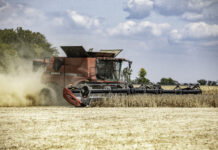By Chris Zoller and Ben Brown
It’s no secret that many sectors of agriculture are suffering financially. USDA, in the annual farm income forecast, reported that farm income is projected down in 2018 compared to 2017 on lower received prices and higher input costs.
Cash flow across commodities is expected to be tight or negative for most agricultural sectors. For people involved in the industry, one does not have to look at their checkbook to know cash flow is tight; it is felt in conversations and observations.
The agricultural economy has been tight before and will be tight again as consumer preferences change, supply shortages or surpluses swing prices or new technologies are adopted. While the USDA Market Facilitation Program, designed to insulate farm income against international retaliatory tariffs for grain and dairy producers, and the Dairy Milk Protection Program (MPP) exist to provide a few extra dollars, the truth is these payments will do little to make significant, long-term impacts for many farmers.
Future years
The Market Facilitation Program is only for one year as producers are expected to make market-based decisions in future years. As a result of farms having less cash on hand unpaid bills and operating debt have increased.
Continual increases in farm-level debt lengthen the time it takes an operation to recover. To estimate the financial health of the industry, lenders and economists use farm financial ratios and values to evaluate financial stress levels.
Individual operations are encouraged to track and benchmark their own numbers to monitor financial standing and make business decisions. Multiple years of data are a tool that helps identify the direction of the business.
Direction of financial health can look different from business growth. During periods of low farm income phrases like “watch liquidity” or “cash is king” emerge, which are references to working capital. This article focuses on working capital. What is working capital?
Assets and liabilities
Working capital is the difference between current or short-term (less than 12 months) assets and current or short-term liabilities.
Current assets include cash, accounts receivable, inventories of grain and market livestock, inputs, and investments in growing crops. Current liabilities include accounts payable, unpaid taxes, operating lines of credit, and principal payments due in the next twelve months on longer-term loans.
The working capital value gives the farm an indication of its ability to cover any short-term debt with current assets. A negative value signals that the operation will have great difficulty paying its short-term debt and potentially have to sell longer-term assets to pay the debt.
What has happened to the working capital of U.S. agriculture? U.S. agriculture has experienced a decline in working capital.
As figure one illustrates, the working capital of U.S. farms has been steadily declining since 2012. The USDA Economic Research Service (ERS) has forecasted the 2018 Working Capital to be about one-third of the 2010 level.

Options available
What options are available if my working capital ratio is low? There are several options to consider, but understand there is no blanket answer to solving the problem.
Each farm and situation is unique.
- Assemble a team of advisors: lender, accountant, attorney, nutritionist, agronomist, extension educator, veterinarian. Ask them to look for areas in your business you can change or improve that may be beneficial.
- Talk to a lender, explain the situation, and see if you can develop a plan. Is it possible to restructure some debt to free up cash?
- Focus on expenses. Are there areas which can be trimmed without harming production?
- Are you feeding unnecessary supplements? Can you reduce your seeding rate to save money? Are you better off to custom hire planting or harvesting? Are you applying too much fertilizer?
- Do you have any non-productive assets? Are there pieces of equipment collecting dust in a barn that could be sold?
- Does your farm include woodlands that you can harvest? If so, work with a professional forester to determine which trees to harvest and collect multiple bids.
- Can revenue be added with off-farm employment or a new enterprise?
- While not desired, the sale of land may be an option worth serious consideration. Note: If you sell resources (land, timber, coal, gas, etc.) realize that these represent one-time infusions of cash into the business. Once sold, these resources are gone. Please keep in mind there will be expenses and tax liabilities with the sale of assets. Have a discussion with your tax advisor before any sale to be sure you are fully aware of all costs.
Summary
There is no certainty as to when the agricultural commodity markets will improve. Until then, we encourage all farmers to know their present situation, work with their lender and team of advisors, and use financial analysis tools to make decisions. Working capital can vary considerably across farms.
Benchmarking your working capital value against other farms of similar size and organization is important when considering how other farms are handling low returns. Likewise, observing the working capital ratio over a number of years identifies the direction of the operation.
If you are interested in additional information, contact your OSU Extension Educator and visit https://farmprofitability.osu.edu/.














I’m trying to figure out how to view “figure one” as in:
As figure one illustrates, the working capital of U.S. farms has been steadily declining since 2012. The USDA Economic Research Service (ERS) has forecasted the 2018 Working Capital to be about one-third of the 2010 level.
Can you help?
Figure 1 has been tracked down and added to the post. Sorry for the inconvenience!